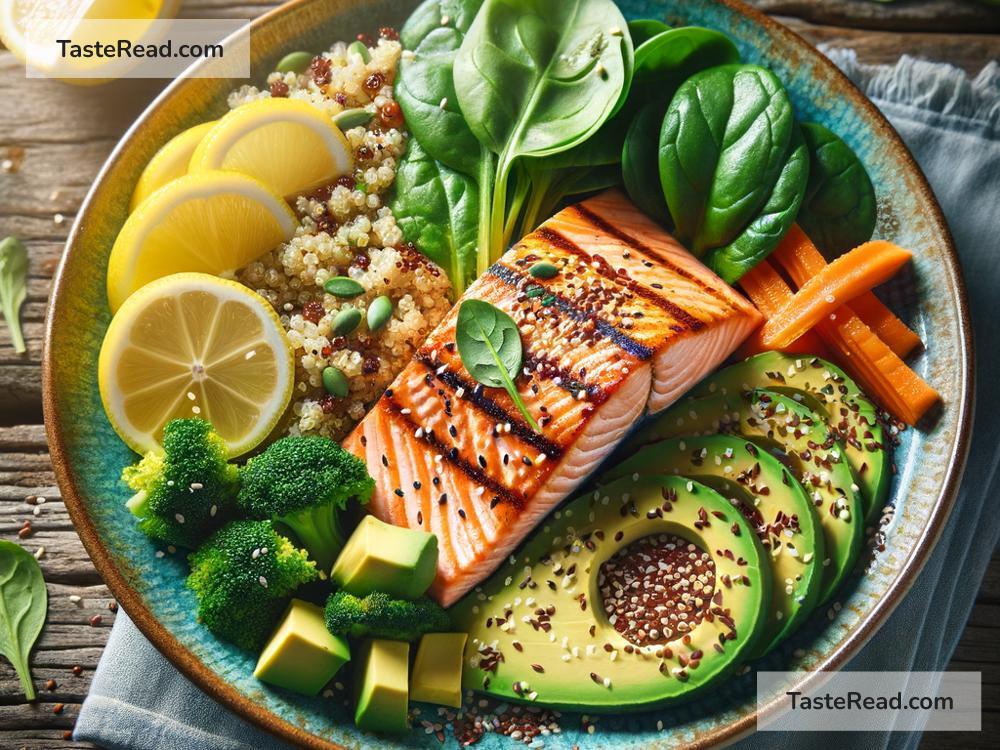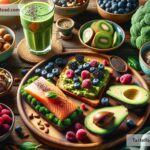Foods for Cholesterol Management: Eat Your Way to Better Heart Health
Cholesterol is a type of fat found in your blood that your body needs to function properly. However, too much cholesterol can lead to health problems like heart disease. If your cholesterol levels are too high, the good news is that you can lower them by making changes to your diet. By eating the right foods and avoiding the wrong ones, you can take control of your cholesterol and improve your heart health. In this blog, we’ll explore foods that help manage cholesterol levels, so you can eat your way to a healthier future.
What Is Cholesterol?
Before diving into the foods that can help manage your cholesterol, it’s important to understand what cholesterol is. Cholesterol is carried through your blood by two different types of lipoproteins: low-density lipoprotein (LDL) and high-density lipoprotein (HDL).
- LDL (bad cholesterol): Too much LDL cholesterol can build up in your arteries, forming plaque that restricts blood flow and increases the risk of heart attacks and strokes.
- HDL (good cholesterol): HDL cholesterol helps carry bad cholesterol back to the liver, where it can be removed from the body.
The goal is to lower your LDL levels while maintaining or even increasing your HDL levels. Thankfully, food can play a big role in achieving this balance.
Top Foods to Lower Bad Cholesterol
Certain foods have been shown to specifically target bad cholesterol (LDL) and help lower it. Adding these to your diet may improve your cholesterol levels over time.
1. Oats and Whole Grains
Start your day with a bowl of oatmeal or whole-grain cereal to give your body a boost in fighting bad cholesterol. Oats contain soluble fiber, which binds to LDL cholesterol and helps remove it from the body. Other whole grains like brown rice, barley, and quinoa also contain similar heart-healthy fiber.
2. Nuts
Nuts are nutritional powerhouses that can help lower cholesterol. Almonds, walnuts, pistachios, and other nuts are rich in healthy fats that improve heart health and reduce LDL cholesterol. They also contain plant sterols, compounds that block cholesterol absorption in your gut. Keep portions small—about a handful a day—because nuts are calorie-dense.
3. Fruits
Fruits like apples, oranges, pears, and berries are loaded with soluble fiber, antioxidants, and natural compounds that help lower bad cholesterol. Citrus fruits like oranges and grapefruits contain pectin, a type of soluble fiber that reduces LDL.
4. Fatty Fish
Fatty fish like salmon, mackerel, tuna, and trout are rich in omega-3 fatty acids, which lower triglycerides (another type of fat in your blood) and help raise good cholesterol (HDL). Omega-3s also reduce inflammation in the arteries, supporting overall heart health. Try to eat fish at least twice a week, preferably baked or grilled.
5. Beans and Lentils
Beans and lentils are packed with soluble fiber and plant-based protein, making them heart-healthy substitutes for meat. Foods such as chickpeas, black beans, kidney beans, and lentils help reduce your LDL cholesterol and keep you feeling full for longer.
6. Avocados
Avocados are rich in monounsaturated fats, which can help lower LDL levels while often increasing HDL cholesterol. They’re also a good source of fiber. Add sliced avocado to salads, sandwiches, or blend them into a smoothie for a creamy treat.
Foods to Raise Good Cholesterol
While lowering bad cholesterol is important, raising your good cholesterol (HDL) is equally essential. Foods that are rich in healthy fats, such as olive oil, nuts, seeds, and fatty fish, can help boost your HDL levels. Regular exercise also plays a significant role in elevating good cholesterol.
Foods to Avoid for Better Cholesterol Control
Not all foods are friendly when it comes to managing cholesterol. Certain foods can make your LDL levels soar, and it’s best to limit or avoid them altogether.
1. Trans Fats
Trans fats, often found in processed foods, margarine, and baked goods like cookies, cakes, and pies, are particularly harmful because they increase bad cholesterol while lowering good cholesterol. Always check labels for “partially hydrogenated oils” and steer clear.
2. Saturated Fats
Saturated fats, found in fatty cuts of meat, cheese, butter, and processed snacks, can raise LDL levels. While it’s okay to enjoy them in moderation, focus more on replacing saturated fats with healthier options like olive oil or avocado.
3. Fried Foods
Fried foods soak up unhealthy fats during cooking, increasing your LDL cholesterol levels. Swap fried foods for baked or grilled alternatives when possible.
4. Sugary Foods
Foods high in sugar, such as soda, candy, and pastries, can indirectly impact cholesterol levels by contributing to weight gain and raising triglycerides.
Final Tips for Cholesterol Management
Small dietary changes can lead to big improvements. Start by incorporating cholesterol-lowering foods into your everyday meals, replace processed foods with whole foods, and watch your portion sizes. Here are a few tips to get started:
- Swap white bread for whole-grain bread.
- Choose olive oil over butter when cooking.
- Replace sugary desserts with fresh fruit or a handful of nuts.
- Snack on raw veggies instead of chips.
Managing cholesterol is about balance, not deprivation. By making heart-smart food choices, you can improve your cholesterol levels and protect your long-term health.
Take control of your cholesterol by eating foods that support a healthy heart. Remember, small steps can lead to big changes, and your health is worth it!


